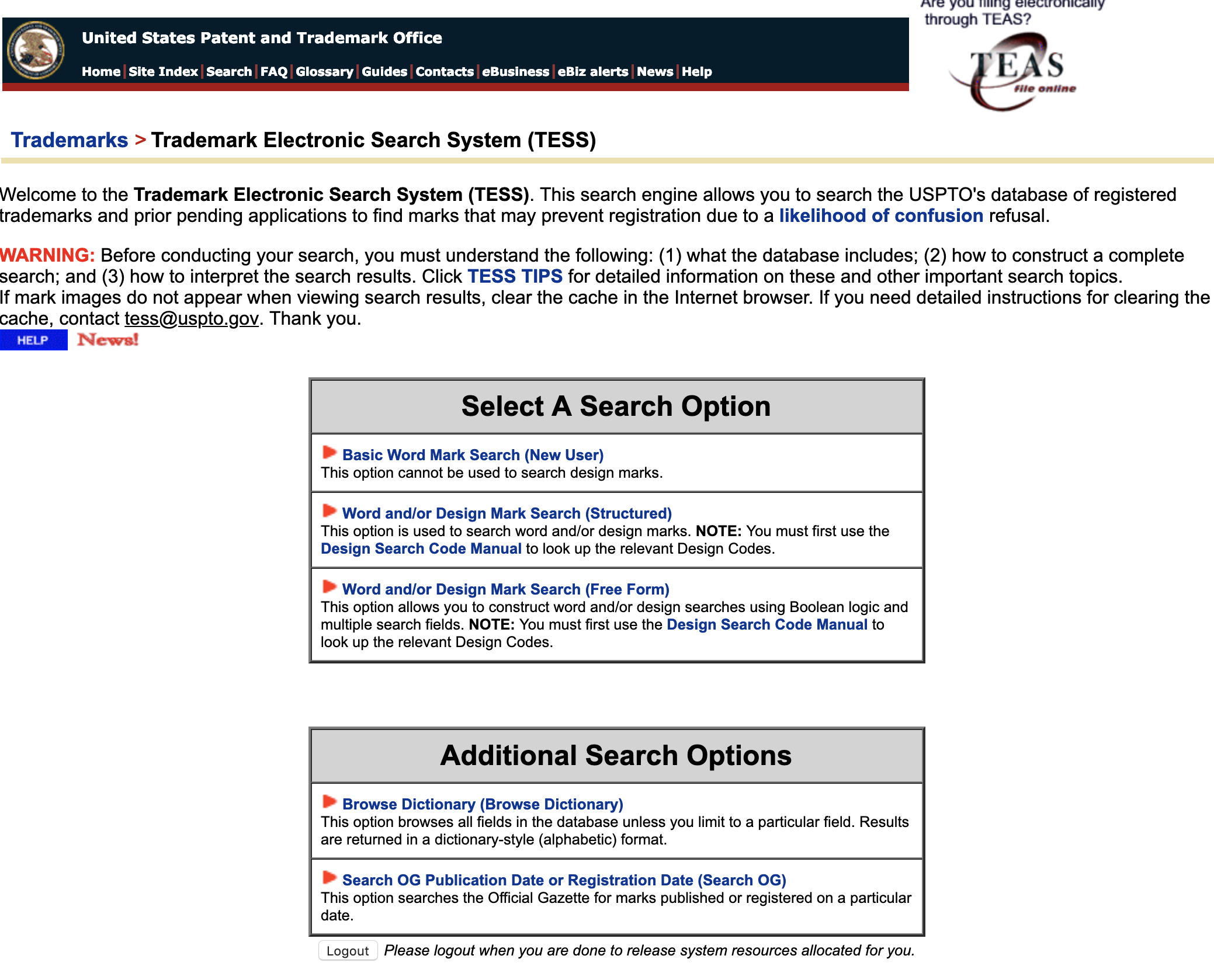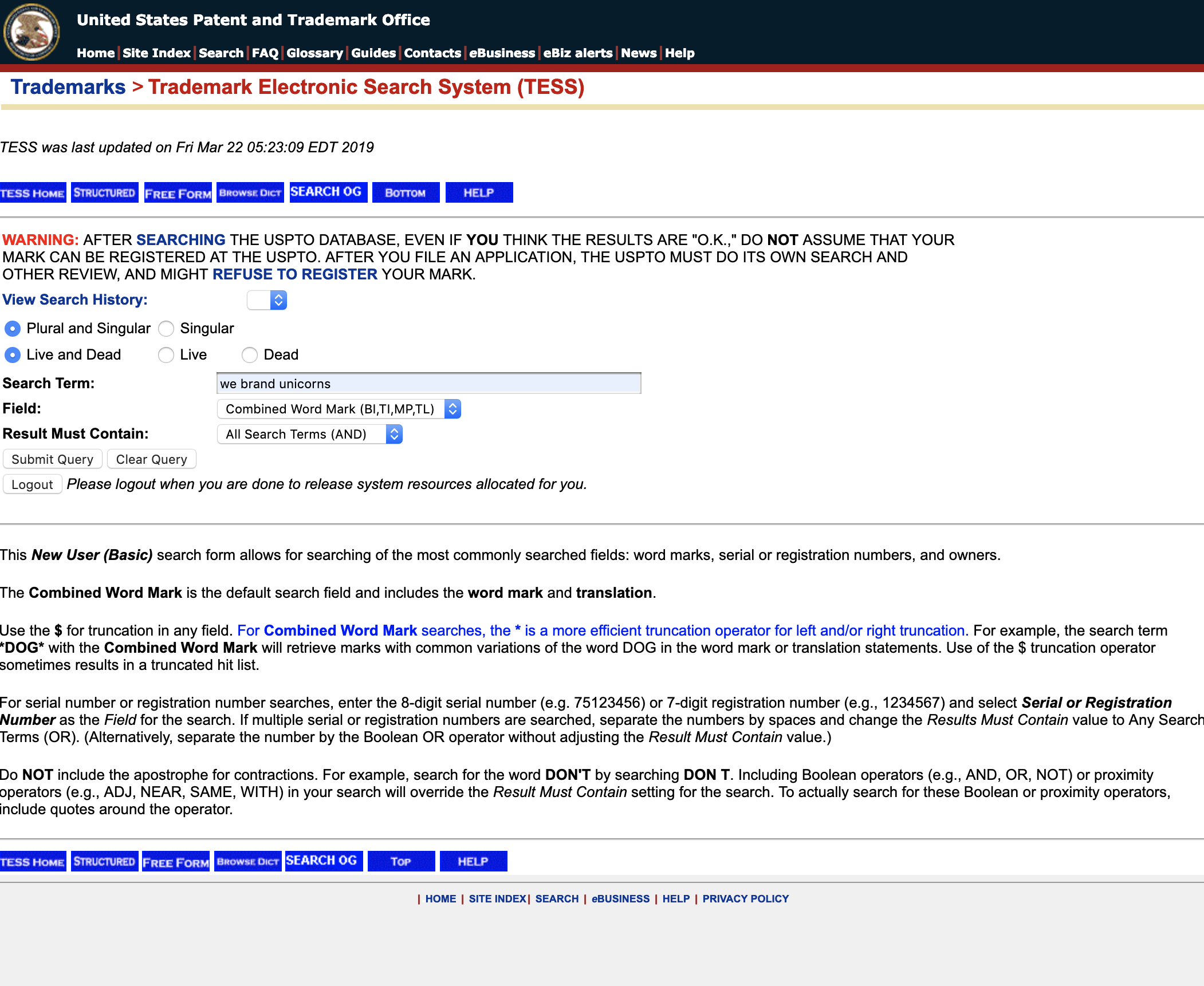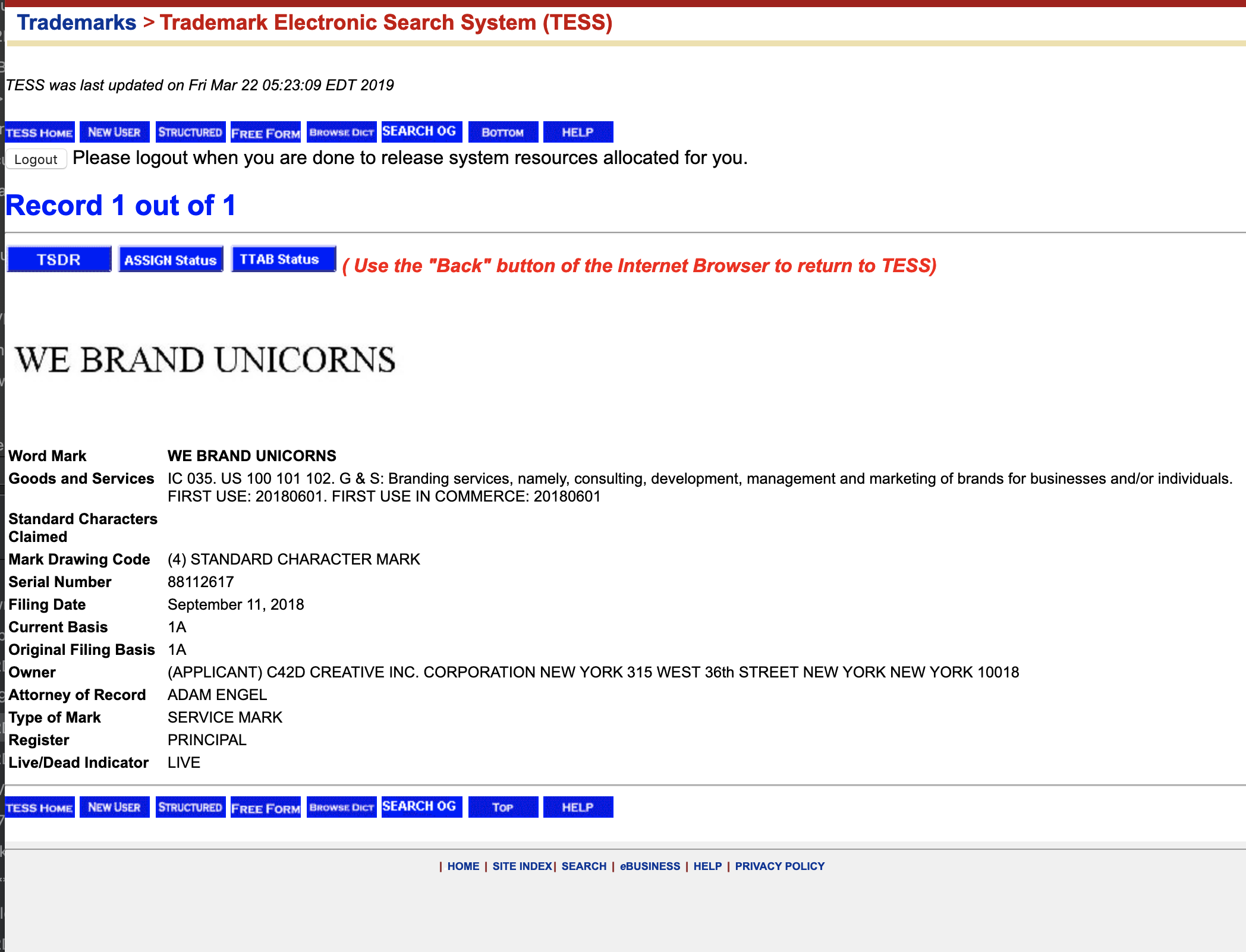Want to Trademark™ That Logo? Meet TESS First.

We know from experience that naming your company can be a fun but frustrating experience. You often think you’ve come up with an original name only to get the rug pulled out from you late in the game. Once you have an awesome name, it's all about protecting your property and preserving your brand equity. Want to know more? Read on to find out how to avoid pain and humiliation and cease-and-desist letters on the road to rebranding.
If you have ever had a killer idea for a name for a company, only to find out that someone else beat you to it, it can be a real gut punch to your creative self-worth.
But then you dig a little deeper, and you realize that the company or product is a bit outdated. Maybe they went out of business. Perhaps the trademark has expired, and you have a shot at it.
Or, after many coffee-powered brainstorming sessions, the cleverest, most dynamite name pops into your head. You whip out your phone and do a quick search to find no meaningful results. You apply for a trademark only to see that someone is sitting on it… or perhaps worse, the purgatory of “Pending.”
Thankfully, there’s an easy to use, intuitive*, seamless resource out there for you to search for and apply for trademarks for your business.
(*At least, it will be after you read this article.)
Say hello to TESS.

Wait… what the heck is TESS?
TESS is an acronym that stands for the Trademark Electronic Search System of the U.S. Patent and Trademark Office. It is the place you should go before applying for a trademark to ensure that there are no existing and pending trademarks in the United States that interfere with the one you’re hoping to get. TESS allows you to see any trademarks that have been registered or applied for that are 1) similar to yours, 2) used on related products or services, or 3) live and in use.
The good news is that your trademark will need to be flagged for all three of those designations before it’s prevented from being registered, based on a likelihood of confusion.
Hold your horses, Dave. Let’s step back for a moment. What is a trademark, and why do I need a trademark for my business?
The USPTO says: “A trademark or service mark includes any word, name, symbol, device, or any combination, used or intended to be used to identify and distinguish the goods/services of one seller or provider from those of others, and to indicate the source of the goods/services.”
A trademark is essentially your brand name. Filing for a trademark protects your business from confusion and competition from other companies or products.
However, not every single business may feel they need to trademark their name. A small, local company can probably get by without a trademark. If another local business tries using your name, or something very similar, you are usually protected by common law. And if another small, local business across the country uses your name, it probably won’t create any problems.
Hence, Frank’s Deli in Council Bluffs, Iowa is not taking any business from or hurting the Frank’s Deli in Park Slope, Brooklyn (although their pastrami is cheaper).
Trademarks, however, are valuable for businesses that are hoping to grow into state- or nation-wide recognizability (like most startups). Applying for and receiving approval for your trademark puts your trademark in the USPTO database, meaning you have the rights to your company or product name, with nationwide protection.
This designation offers you legal protection should you need it at any time. (And you also get to put that cool little ® next to your name or logo, making you look legit.)
 with a UI this awesome, what could go wrong?
with a UI this awesome, what could go wrong?
So cut to the chase. How do I search to see if I can trademark my name?
Hi TESS, welcome back!
TESS isn’t the most straightforward system to navigate. If you only search without any expectation of what’s coming next, you might be frightened by what you’ll find.
The most natural aspect of the search results page is the “Live” or “Dead” designation. But clicking on each result is where things start getting rough.
Trademarks are goods- and services-specific. When you hear “Delta,” you may immediately think of the airline, but Delta is also a well-known faucet manufacturer (and a lot of other things too). So if you do a search for your proposed trademark and see a list of live trademarks of that name, that doesn’t mean you have to think of a new name.
Here classification codes come into play. Each accepted trademark is designated with either one or a few three-digit codes that identify what goods and services the business operates in. (If you’re unsure of which goods and services to designate for your trademark, the USPTO offers a Trademark ID Manual to help you determine.)
Each high-level classification code also has smaller “coordinated classes” to further drill down within each good or service. Aside from it being impossible, you by no means need to memorize all of these classification codes. They’re available on this page for your reference. You’ll want to be sure to look through each search result and look at the “Goods/Services” section and see what codes are listed. That’s where you’ll find potential companies with trademarks in your industry.
This is helpful, thank you! But I’ve heard I should hire a trademark attorney.
It is beneficial to familiarize yourself with the USPTO site and TESS specifically, so that you can get a good idea if your potential trademark is available or not. It can help in creating lists of possible names that come out of brainstorming sessions.
But once it comes time to file, hiring a trademark attorney is a great idea. Trademark attorneys are experts in the process of filing, aware of the intricacies of the system and able to spot potential problems with your preferred trademark — before you even get to the filing stage.
Not to mention, trademark attorneys have a much higher success rate. A study done by the Stanford Technology Law Review found that over a 25-year period, using a trademark attorney increased the possibility of approval by about 50%.
When in doubt, go with the experts. Oh, and we should point out that we are not lawyers and this article is not meant to construe legal advice…

Yeah, we practice what we preach
Alright… but got any basic tips for me?
Sure! We know the above is a lot to process, so let’s boil it down:
- Understand what you can and can’t trademark. Think of a unique name. You usually can’t trademark a generic, often used word as the name of your company or product…that is until it becomes big enough where it becomes synonymous with your brand or product (think Apple).
- Familiarize yourself with the USTPO site and TESS. Do some sample searches with companies you’re familiar with. You’ll be amazed at how many trademarks they have to apply for. Once you get the hang of it, dare we say TESS can be a bit of fun.
- When you think you have a potential name you like, conduct a search in TESS. You don’t want to start envisioning your branding with a name that you eventually won’t be able to use.
- Consider hiring a trademark attorney. If you can afford one, they’ll significantly increase your chances of having your trademark application approved. You can always feel free to apply by yourself as well.
Wow, you’re the best. Any closing thoughts?
Aw, shucks… thanks.
We know from experience that naming your company can be a fun but frustrating experience. You often think you’ve come up with an original name only to get the rug pulled out from you late in the game. And hey, naming isn’t for everyone, which is why hiring a branding agency (like C42D) can exponentially increase the odds of you landing a strategic and ownable name.
Understanding how trademarks work and how to use TESS can help keep your emotions in check throughout this process. And when you find that your killer trademark is available, you can start dreaming big on your way to unicorn-land.
If this article helped you, please help us by sharing it or recommending to a friend. Thank you!


